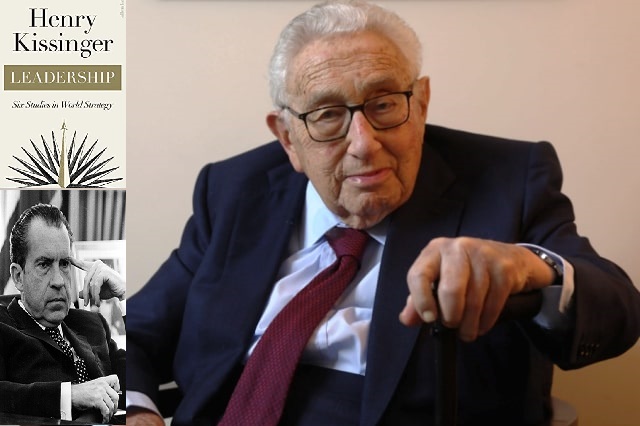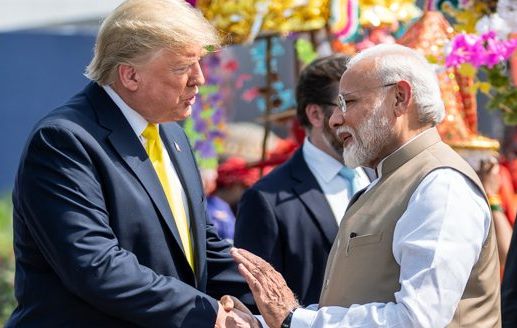The focus in India, for the moment at least, is on the outcome of the elections in five states. Many believe that the results of the assembly elections this month in Madhya Pradesh, Rajasthan, Chhattisgarh, Telangana, and Mizoram can indicate what could happen in the parliamentary elections in May 2024 when the Narendra Modi-led Bharatiya Janata Party (BJP) (along with a few allies), which is completing its second term in government, will aim to win a third term at the Centre. Predicting elections can be a mug’s game because they can be unpredictable but 2024 is not just about elections in India. It is a year full of elections around the world, and the outcomes of some of them could have a profound impact across the world, India included.
In 2024, according to the Economist, there will be more than 70 elections in countries, which together have a population of 4.2 billion. That is more than half of the 8.04 billion that the United Nations estimates live on our planet. Of all of those elections, the one in America will probably have the biggest impact on the rest of the world.
The US presidential election is scheduled for November 5, 2024, which is nearly a year away but speculation and predictions about who could be the next person in the White House already abound. According to the latest polls and betting odds, former President Donald Trump is the favorite to win the Republican nomination and has a competitive chance of defeating President Joe Biden in a hypothetical 2024 rematch. Trump leads by small margins in battleground states and nationally, despite facing two impeachments and legal drama. There are several ongoing legal battles that he has to fight but this does not seem to bother his staunch supporters.
Among the Republican hopefuls, Trump has the highest approval rating among Republican voters, with more than 50% support in the national primary polls. His closest competitor, Florida governor Ron DeSantis, has fallen below 20% nationally. No other contender for the Republican nomination is at or above 10%.
On the other side, President Joe Biden will be running for reelection as the Democrat candidate but his chances are quite uncertain. Biden will turn 82 next year. His approval rating has been low. He has faced criticism on his handling of various issues: the Coronavirus pandemic, which America dealt with quite sloppily; the withdrawal of US troops from Afghanistan, which led to a resurgence of the Taliban and the deterioration of human rights, especially for women and minorities; and logjams hindering lawmaking in the legislative process in the US legislature.
Biden also has to contend with the age factor that acts against him. Trump, who will be 78 next year, is not young either but there have been rumblings in the media and even in the Democratic Party that question Biden’s fitness–both physical and mental. Some Democrats would probably want to go with a fresh, and perhaps, younger candidate but there has been no alternative and with the campaigning on both sides already well underway, it may be too late to switch horses.
What then if Trump is indeed back in the White House for the second time as President of the US? It’s a complex question because he could impact America and the rest of the world in several ways. The world is witnessing several issues of critical importance. There is a war on between Russia and Ukraine for nearly two years since the former attacked the latter in February 2002; since October, Israel and the militant group, Hamas, have been at a war with the most horrific manifestations in Gaza; China has been consistently and steadily trying to put in place a “new global order” that aims at challenging the US and the West’s dominance in geopolitics; and an alignment of China with Russia, Iran, and other Arab world nations is emerging.
Against this landscape if a Trump regime is back in America, it could have a critical impact on the state of the world.
ALSO READ: An Indicted Trump Could Still Be US President
Trump is widely expected to further continue his America First strategy of foreign policy, diplomacy, and trade. What that means is he will focus on reducing US trade deficits by raising tariffs on imports; his policies could make America more unilateral and confrontational; and he could be more transactional rather than be driven by other objectives in dealing with foreign countries. This means America, which does the heavy lifting in alliances such as NATO, and organisations such as the UN, and the World Trade Organisation (WTO), could reduce its commitments to them and, thereby weaken them. As it could by retreating from its commitments to the Paris climate accord.
If a Trump regime (or for that matter any Republican regime that might be elected to power) reduces the commitment to NATO, it could jeopardise the future stability of Europe. Here’s how. According to Article 5 of its agreement, if a NATO country is attacked, it means that it is an attack on all members. This means that all NATO members will consider the attack as an act of self-defence and will take actions to assist the country attacked, including the use of armed force if necessary. Trump’s position on Article 5 of NATO has been unclear and inconsistent.
In March 2016, before he became President, he said that NATO was obsolete and that Russia no longer posed the threat the Soviet Union did. He also questioned whether he would protect smaller states from Russia if they did not pay their fair share.
Trump’s support for Article 5 is conditional and dependent on his perception of NATO’s relevance and performance. He has not consistently expressed his commitment to the alliance and its core tenet, which could undermine its credibility and deterrence. He has, however, publicly stated that that the war in Ukraine “must end” but that “this fight is far more important for Europe than it is for the US”.
If Trump scales down US’ commitment to NATO he could further damage the trans-Atlantic relationship by imposing trade tariffs, sanctions, and, importantly, by recalling US troops from Europe. These could play into the hands of Russia, which could get emboldened to attack other former Soviet territories. It would also weaken NATO and threaten the stability in Europe.
Trump’s stance on China is less predictable. He could pursue a more aggressive approach by imposing further tariffs and restrictions on Chinese ownership and investment in the US, as well as challenging China’s actions in the South China Sea, Taiwan, Hong Kong, and Xinjiang. This could escalate the trade and technology war between the two countries, as well as increase the risk of a military conflict or a new cold war.
Some of what the stance could be towards China could be influenced by Trump’s close relationship with Russia and President Vladimir Putin. Trump had once said that he believed Putin rather than the US Intelligence agencies about Russia’s alleged interference in US elections, which Putin had denied. A benign approach to Russia would further fan its expansionist actions such as the attack on Ukraine. And with China an avowed supporter of Russia it could influence Trump’s stance against China itself.
In the Middle East, Trump could resume his “maximum pressure campaign” against Iran by withdrawing from the 2015 nuclear deal, which restricts Iran’s efforts to develop nuclear weapons and one to which Iran’s compliance has been questioned. If Trump opts for more sanctions instead of a mutually agreed deal (between Iran and the five permanent members of the United Nations Security Council—China, France, Russia, UK, US, plus Germany, together with the European Union), tensions could flare up further in the region and Iran could resume its nuclear activities. In the ongoing Israel-Hamas conflict, Iran, which has a history of backing militant groups opposed to Israel, could get involved more overtly than it has till now.
What could a Trump regime mean for India? One possibility is that Trump would continue to elevate America’s ties with India and the growing partnership between the two countries, especially in the areas of defence, security, and trade. Trump has been supportive of India’s role in the Indo-Pacific region and has recognised India as a major defence partner. He has also praised Prime Minister Narendra Modi and his policies, such as the abrogation of Article 370 in Kashmir and the Citizenship Amendment Act. Trump and Modi have also developed a personal rapport and have held several joint rallies, such as the “Howdy Modi” event in Houston and the “Namaste Trump” event in Ahmedabad.
Yet, a Trump administration could also create more challenges and uncertainties for India, particularly in immigration, climate change, and regional stability. In the past, Trump has imposed tariffs on some Indian goods, such as steel and aluminum. He has also threatened to revoke India’s preferential trade status under the Generalised System of Preferences (GSP).
Trump has also tightened the visa rules for skilled workers and students, which could affect the prospects of many Indians who seek to work or study in the US.
He withdrew from the Paris climate accord and accused India of being one of the world’s biggest polluters. Trump has also been inconsistent and unpredictable in his approach to Pakistan, Afghanistan, Iran, and China, which could have implications for India’s security and interests in the region.
To sum up, a Trump in the White House could be like a bull in a china shop (pardon the pun).
For more details visit us: https://lokmarg.com/



